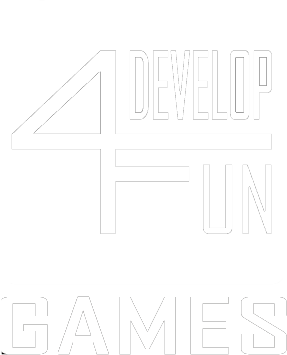Horror games live and die by the ability to evoke fear, unease, and tension. The best titles don’t just rely on jump scares or grotesque imagery; they create a psychological grip that lingers long after the screen goes dark. True horror stems from an intricate dance between game mechanics, player psychology, and environmental storytelling. While every game has its unique tricks, some fundamental mechanics define the experience. Let’s explore three core horror mechanics that developers use to turn digital nightmares into immersive terror.
1. The fear of the unknown: dynamic unpredictability
One of the most unsettling experiences in horror games is when the world refuses to behave as expected. Predictability offers comfort; horror thrives in stripping that away.
Many classic survival horror titles, like Silent Hill 2 and Resident Evil, use environmental changes to unsettle players—rooms that shift when re-entered, subtle alterations in objects, or sound cues that hint at something lurking just out of sight. These aren’t random changes; they are carefully designed to disrupt the player’s sense of reality, forcing them to question what they know about the space around them.
Recent horror titles take this further with procedural unpredictability. Games like Alien: Isolation and Amnesia: The Bunker employ AI-driven antagonists that never behave the same way twice. Instead of scripted scares, the creature adapts, learns, and changes its patterns. This transforms every encounter into an anxiety-ridden experience where survival feels genuinely uncertain.
The unpredictability isn’t just about monsters. Some of the most terrifying moments in horror come from the world itself turning against the player. P.T., the legendary playable teaser from Kojima Productions, uses repetition with subtle distortions to create a gradual descent into madness. Doors that were once safe become dangers. Hallways stretch into infinity. Sound cues whisper clues, but never enough to provide clarity. The unknown isn’t just what lurks in the dark—it’s the creeping realization that nothing can be trusted.
2. Vulnerability as a core mechanic
Power fantasies and horror don’t mix. The moment a player feels too strong, fear diminishes. The best horror games place the player in a state of controlled helplessness—not frustrating to the point of unfairness, but just enough to induce constant tension.
Limited resources play a crucial role in this. Resident Evil pioneered the concept of scarcity-driven tension, where every bullet, health item, and save point was a decision rather than a convenience. The simple act of managing inventory becomes a psychological struggle.
Other games remove combat entirely, shifting the focus to avoidance and stealth. Outlast, SOMA, and Amnesia: The Dark Descent strip players of traditional defenses, leaving them with only one option: run or hide. This enforces a survival mindset where even a minor encounter can mean death.
Beyond resource scarcity, movement mechanics can reinforce vulnerability. Fatal Frame forces players to stand their ground and face ghosts through a camera lens, removing the natural instinct to flee. In Alien: Isolation, the xenomorph is faster, stronger, and more relentless than the player. The act of crouching behind a desk, holding breath as footsteps approach, becomes a test of nerves. Vulnerability in horror games isn’t just about lacking weapons—it’s about forcing players into situations where their own instincts betray them.
3. Environmental and psychological sound design
Sound is the unsung architect of fear in horror games. It manipulates perception, triggers anxiety, and often hints at danger before anything appears on screen.
Subtle, ambient noise—like distant whispers, creaking floorboards, or a dripping faucet—creates tension without the need for a visible threat. Dead Space perfected this technique, using dynamic audio to create an oppressive atmosphere where even silence feels deafening.
Then there’s the absence of sound. Silence in horror games is never empty—it’s a promise that something is about to happen. The human brain craves patterns and familiarity; when expected sounds disappear, unease creeps in. Amnesia: The Dark Descent plays with this by stripping away music entirely when danger is near, leaving players hyper-aware of every tiny noise.
Music, when used correctly, is another powerful tool. Dissonant chords, off-key notes, and shifting rhythms create subconscious discomfort. Akira Yamaoka’s Silent Hill soundtracks are a masterclass in this, blending industrial noise with haunting melodies that feel both surreal and oppressive.
Some games go a step further, using diegetic sound mechanics—meaning the sounds exist within the game world itself. Hellblade: Senua’s Sacrifice uses binaural audio to simulate schizophrenia, whispering voices into the player’s ears with unsettling realism. In Eternal Darkness: Sanity’s Requiem, the game manipulates sound to gaslight the player, making them believe their TV volume is lowering or that characters are speaking in tongues.
Sound design isn’t just about making things “scary.” It’s about creating a space where players don’t just hear the horror—they feel it sinking into their skin.
The mechanics of fear
Horror in gaming is more than just visuals or scripted scares. The deepest fear comes from mechanics that engage the player’s mind—whether through the unpredictability of the world, the sensation of vulnerability, or the way sound manipulates perception.
These mechanics don’t work in isolation. The most terrifying games weave them together, creating an experience where fear is not just felt but lived. Whether it’s the xenomorph hunting in the vents, the camera’s flash revealing a ghost inches away, or the eerie silence before a sudden, distant whisper—true horror lingers because it refuses to let go.
And in the best horror games, the real terror begins the moment you turn off the screen and realize the darkness in the room suddenly feels a little too deep.







